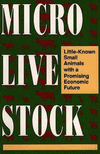Cows hold grudges, say scientists
JONATHAN LEAKE, THE AUSTRALIAN - Once they were a byword for mindless docility. But cows have a complex mental life in which they bear grudges, nurture friendships and become excited by intellectual challenges, researchers have found. Cows are capable of strong emotions such as pain, fear and even anxiety about the future. But if farmers provide the right conditions, they can also feel great happiness.
The findings have emerged from studies of farm animals that have found similar traits in pigs, goats and chickens. They suggest such animals may be so emotionally similar to humans that welfare laws need to be reconsidered....
The Bristol researchers have documented how cows within a herd form friendship groups of between two and four animals with whom they spend most of their time, often grooming and licking each other. They will also dislike other cows, and can bear grudges for months or years.
Donald Broom, professor of animal welfare at Cambridge University, will tell the conference how cows can become excited by solving intellectual challenges. In one study, researchers challenged the animals with a task where they had to find how to open a door to get some food. An electroencephalograph was used to measure their brainwaves.
"The brainwaves showed their excitement; their heartbeat went up and some even jumped into the air. We called it their Eureka moment," Professor Broom said.
The assumption that farm animals cannot suffer from conditions that would be intolerable for humans is partly based on the idea they have no sense of self. Latest research suggests this is untrue.
"Sentient animals have the capacity to experience pleasure and are motivated to seek it," Professor Webster said.
"You only have to watch how cows and lambs both seek and enjoy pleasure when they lie with their heads raised to the sun on a perfect English summer's day. Just like humans."













